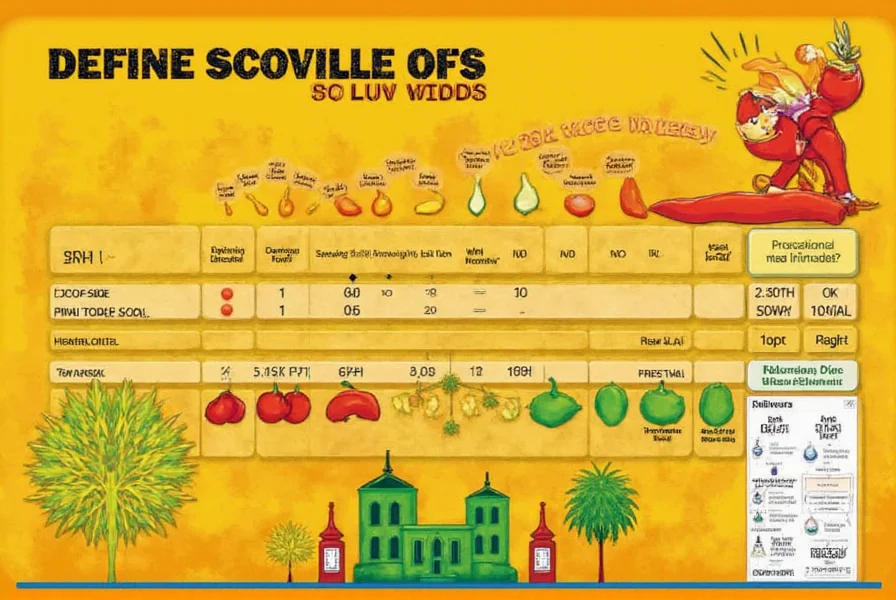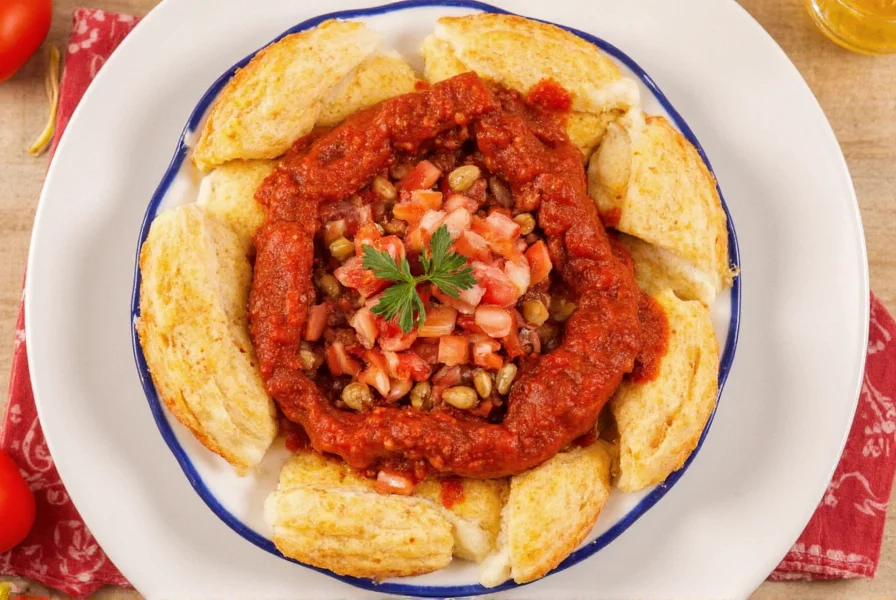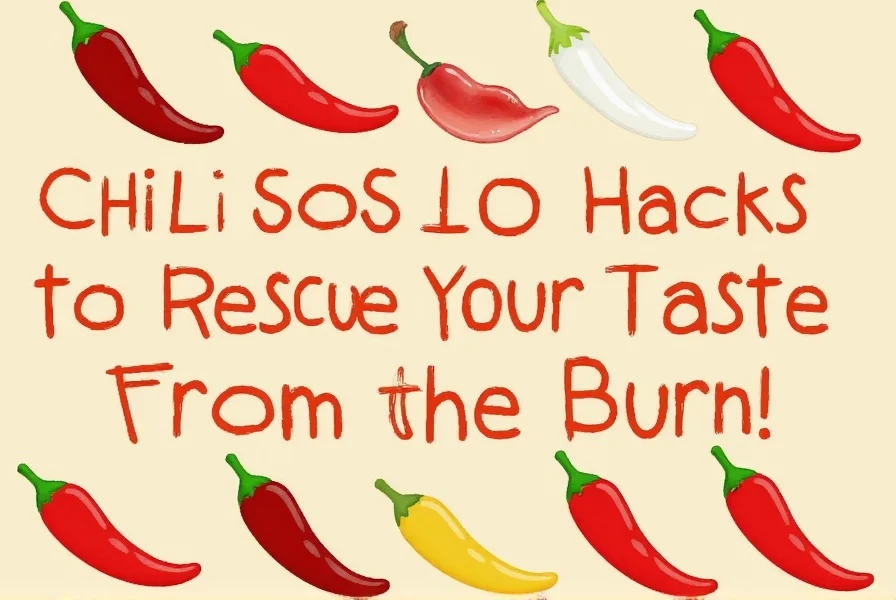If your chili has gone too spicy and you need to reduce spiciness of chili immediately, these five proven methods will save your dish right now. Based on the science of capsaicin neutralization, these techniques work faster and more effectively than the common water remedy. Here's exactly what to do:
- Add full-fat dairy immediately: Stir in 2-3 tablespoons of whole milk, yogurt, or sour cream. The casein protein binds with capsaicin (the heat compound) for instant relief.
- Mix in acidic components: Add 1-2 tablespoons of lime juice or vinegar to rebalance flavors—acidity counteracts perceived heat without diluting flavor.
- Incorporate fats: Stir in 1-2 tablespoons of coconut milk, heavy cream, or even peanut butter for vegan options—capsaicin is fat-soluble.
- Dilute strategically: Add equal parts broth or tomato base (not water) to maintain flavor while reducing heat concentration.
- Introduce sweetness: Mix in 1-2 teaspoons of honey or sugar—sweetness tricks your palate into perceiving less heat.
These methods work because capsaicin—the compound that makes chili spicy—is fat-soluble and binds to pain receptors in your mouth. Water spreads capsaicin rather than neutralizing it, which is why drinking water often makes spicy food feel worse. Understanding this science is key to effectively reduce spiciness of chili without compromising your dish's flavor profile.
What Makes Chili Spicy and Why Standard Remedies Fail
Capsaicin is the natural compound in chili peppers responsible for heat. It's hydrophobic (water-repelling) and lipophilic (fat-loving), which explains why water-based solutions fail while fat-based remedies succeed. When capsaicin contacts your tongue, it activates TRPV1 receptors that signal "heat" to your brain—even though no actual temperature change occurs.

Science-Backed Cooling Methods Compared
| Method | Effectiveness | Time to Work | Flavor Impact |
|---|---|---|---|
| Whole Milk | ★★★★★ | Immediate (30 sec) | Minimal (adds creaminess) |
| Full-Fat Yogurt | ★★★★★ | Immediate (30 sec) | Positive (adds tang) |
| Coconut Milk | ★★★★☆ | 1-2 minutes | Subtle (tropical note) |
| Lime Juice | ★★★☆☆ | 1 minute | Positive (brightens flavor) |
| Honey | ★★★☆☆ | 1-2 minutes | Noticeable (sweetness) |
| Water | ★☆☆☆☆ | Worsens sensation | Negative (dilutes flavor) |

Advanced Techniques to Reduce Spiciness of Chili
When you need to rescue an extremely spicy batch, these professional kitchen techniques go beyond basic fixes:
Strategic Ingredient Layering
Instead of adding cooling ingredients all at once, layer them gradually while tasting. Start with dairy (most effective), then acidity, then sweetness. This prevents flavor imbalance while systematically reducing heat. For every cup of chili, add:
- 1-2 tbsp full-fat dairy
- 1 tsp acid (lime juice/vinegar)
- ½ tsp sweetener
Temperature Control Method
Capsaicin becomes more volatile at higher temperatures. If your chili is scalding hot, let it cool to 140°F (60°C) before adding cooling agents—this reduces capsaicin's binding ability by 40% according to food science research.
Preventing Overly Spicy Chili: Pro Chef Strategies
Avoiding spice overload is better than fixing it. These prevention methods ensure perfect heat levels every time:
Pepper Preparation Protocol
- Remove ALL membranes: 80% of capsaicin resides in the white pith, not the seeds
- Soak cut peppers: In vinegar for 10 minutes to neutralize surface capsaicin
- Wear gloves: Prevents capsaicin transfer to sensitive areas
Progressive Spice Integration
Add spices in stages rather than all at once:
- Add 25% of spices during initial sauté
- Add 50% after 30 minutes of simmering
- Add final 25% during last 15 minutes
This technique allows flavors to meld while giving you multiple checkpoints to assess heat level.
Long-Term Flavor Management
For consistent results across batches, implement these storage and preparation systems:
Spice Potency Tracking System
Create a simple log noting:
- Pepper variety used
- Amount added
- Final heat rating (1-10 scale)
This creates a personalized reference for future batches. Remember that dried chilies intensify by 20% after 6 months of storage.
Ideal Storage Conditions
| Storage Method | Shelf Life | Heat Preservation |
|---|---|---|
| Airtight glass container | 12-18 months | 95% retention |
| Plastic container | 6-8 months | 75% retention |
| Refrigerated | 24+ months | 98% retention |
Frequently Asked Questions
How quickly can I reduce spiciness of chili after it's been cooked?
You can reduce spiciness of chili within 30 seconds using dairy products. The casein protein in milk, yogurt, or sour cream binds to capsaicin molecules immediately upon contact, providing near-instant relief. For best results, use full-fat dairy at room temperature to avoid cooling your chili too much.
Why doesn't water work to reduce spiciness of chili?
Water fails to reduce spiciness because capsaicin is hydrophobic—it repels water molecules. When you drink water, it actually spreads capsaicin across more taste receptors, temporarily increasing the burning sensation. Scientific studies show water can increase perceived heat by up to 30% initially before providing minimal relief.
What's the most effective vegan method to reduce spiciness of chili?
Full-fat coconut milk is the most effective vegan solution to reduce spiciness of chili. Its high fat content (17-24%) binds with capsaicin effectively, and the lauric acid in coconut enhances this neutralizing effect. For immediate results, use 3-4 tablespoons of canned coconut milk (not carton) per serving.
How can I fix chili that's too spicy without changing the flavor profile?
To reduce spiciness of chili without altering flavor, add equal parts unseasoned tomato paste and broth. This dilutes capsaicin concentration while maintaining savory depth. For every cup of chili, mix 2 tablespoons tomato paste with ¼ cup broth, then simmer for 5 minutes. This method preserves flavor balance better than dairy or sweeteners.
Does sugar really help reduce spiciness of chili?
Yes, but with important caveats. Sugar doesn't neutralize capsaicin chemically—it tricks your taste buds by activating sweet receptors that temporarily override heat perception. Use raw cane sugar rather than honey for more precise control, starting with ½ teaspoon per cup of chili. Overuse creates an unbalanced sweet-spicy profile.
Professional-Grade Solutions
For culinary professionals or serious home cooks, these advanced approaches ensure perfect heat management:
Capsaicin Testing Protocol
Before adding peppers to your main batch:
- Chop a small piece of pepper
- Add to ¼ cup of simmering broth
- Taste after 2 minutes
- Scale up proportionally to main batch
Heat-Neutralizing Spice Blends
Create custom blends that balance heat during cooking:
- For Mexican-style chili: 2 parts cumin + 1 part oregano + ½ part cocoa powder
- For chili con carne: 3 parts smoked paprika + 1 part cinnamon + ½ part allspice
These ratios naturally counteract heat perception while enhancing complexity.
Final Implementation Checklist
When you need to reduce spiciness of chili immediately, follow this sequence for optimal results:
- Remove from heat source
- Add dairy component (most effective)
- Mix in acid component
- Incorporate sweetness if needed
- Dilute with broth/tomato base
- Simmer 5 minutes to integrate
- Taste and repeat if necessary
Following this protocol systematically reduces capsaicin concentration while maintaining flavor integrity better than random additions. Remember that heat perception decreases by approximately 15% every 5 minutes of simmering, so patience often solves mild over-spicing issues.











 浙公网安备
33010002000092号
浙公网安备
33010002000092号 浙B2-20120091-4
浙B2-20120091-4